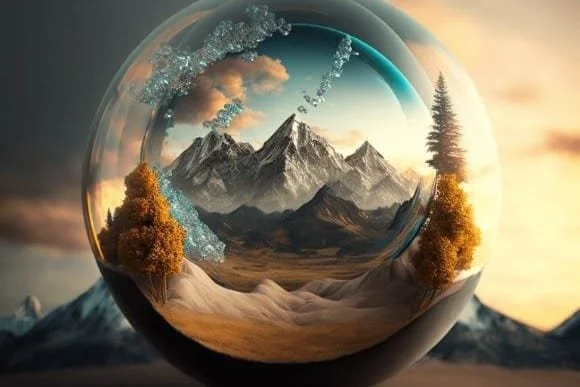By: Jonah Elkowitz
Edited By: luke vredenburg and claire quan
“Draw a dog in a courtroom. Show me a cow on the moon.” We have all seen these prompts across the internet, showcasing how artificial intelligence can create an image of our choosing. DALL-E, Midjourney and Stable Diffusion are among the many AI tools capable of this, referencing digitized art records to create custom images and taking the tech world by storm.
While many AI-related tools have emerged for gathering information and processing data, such as Open.AI, this program produces a bespoke visual for the user. This begs the question — who is the artist? One might say the algorithm or the artist who created the original work, but the answer is more complicated.
Several lawsuits have been filed around the globe by prominent art databases and individual artists alike, claiming that they, not the AI, are the owners of the works.[1] One case, filed by Getty Images in the High Court of Justice in London, accuses Stability AI of utilizing copyrighted content to create their images, claiming “stability AI unlawfully copied and processed millions of images protected by copyright and the associated metadata owned or represented by Getty Images absent a license.”[2] . In another case, the Saveri Law firm filed suit on January 13th in the US District Court for the Northern District of California.[3] The case alleges that AI art software infringes on the rights of “thousands of artists and creators” and creates a financial burden for them to bear.[4] This case will decide the legality of content use and affect the incomes and royalties of artists worldwide. If the court rules in AI’s favor, artists may be left in the dust when it comes to receiving compensation for use of their work.
Artists, databases, and independent creators alike are arguing that software companies are stealing original artwork from their creators. Drawing upon U.S. law, they contest that the usage of their images indiscriminately violated intellectual property laws that are established to protect artists and their work.[5] Companies such as Stability AI haven’t addressed the issue of intellectual property. Moreover, they do not discuss the basis for their artificial intelligence tools but claim their software is open source.[6]
Artificial intelligence relies on art collections to base its creations.[7] The creators of such algorithms sample thousands of paintings, photographs, and drawings from history. The ultimate goal is for the algorithm to master a specific aesthetic, then recreate it as often as possible, in as many ways as possible. [8]
So, who is the artist? The courts have yet to answer, but AI software is objectively plagiarizing artists' work to create a work of its own. Though the product isn't identical to that of its original creator, some aspects of it are taken, manipulated, and repurposed. The lack of legal precedent makes the answer ambiguous. However, according to the U.S. Copyright Office, “copyright infringement occurs when a copyrighted work is reproduced, distributed, performed, publicly displayed, or made into a derivative work without the permission of the copyright owner.”[9] Using this definition, some form of credit or compensation should be given by AI platforms to creators for infringing on their copyrights, though time will tell if this comes to fruition.
Notes:
O'Brien, Matt. “AI Tools Can Create New Images, but Who Is the Real Artist?” AP NEWS. Associated Press, January 19, 2023. https://apnews.com/article/artificial-intelligence-images-rights-1c6d9e0e260e2d135a3e3bf98d5493df.
“Getty Images Statement.” Newsroom, January 17, 2023. https://newsroom.gettyimages.com/en/getty-images/getty-images-statement.
Andersen et al v. Stability AI Ltd. et al (2023)
“Ai Art Generator Copyright Litigation - Joseph Saveri Law Firm.” AI Art Generator Copyright Litigation - Joseph Saveri Law Firm. Accessed February 1, 2023. https://www.saverilawfirm.com/our-cases/ai-artgenerators-copyright-litigation.
“Getty Images Statement.” Newsroom, January 17, 2023.
“Stability Ai.” Stability AI. Accessed April 2, 2023. https://stability.ai/.
“Ai Is Blurring the Definition of Artist.” American Scientist, June 14, 2019. https://www.americanscientist.org/article/ai-is-blurring-the-definition-of-artist.
“Ai Is Blurring the Definition of Artist.” American Scientist, June 14, 2019.
“Definitions.” Definitions (FAQ) | U.S. Copyright Office. Accessed February 1, 2023. https://www.copyright.gov/help/faq/faq-definitions.html.
BIBLIOGRAPHY:
“Ai Art Generator Copyright Litigation - Joseph Saveri Law Firm.” AI Art Generator Copyright Litigation - Joseph Saveri Law Firm. Accessed February 1, 2023. https://www.saverilawfirm.com/our-cases/ai-artgenerators-copyright-litigation.
“Ai Is Blurring the Definition of Artist.” American Scientist, June 14, 2019. https://www.americanscientist.org/article/ai-is-blurring-the-definition-of-artist.
Andersen et al v. Stability AI Ltd. et al (US District Court for the Northern District of California January 13, 2023).
“Definitions.” Definitions (FAQ) | U.S. Copyright Office. Accessed February 1, 2023. https://www.copyright.gov/help/faq/faq-definitions.html.
“Getty Images Statement.” Newsroom, January 17, 2023. https://newsroom.gettyimages.com/en/getty-images/getty-images-statement.
O'Brien, Matt. “AI Tools Can Create New Images, but Who Is the Real Artist?” AP NEWS. Associated Press, January 19, 2023. https://apnews.com/article/artificial-intelligence-images-rights-1c6d9e0e260e2d135a3e3bf98d5493df.
“Stability Ai.” Stability AI. Accessed April 2, 2023. https://stability.ai/.




